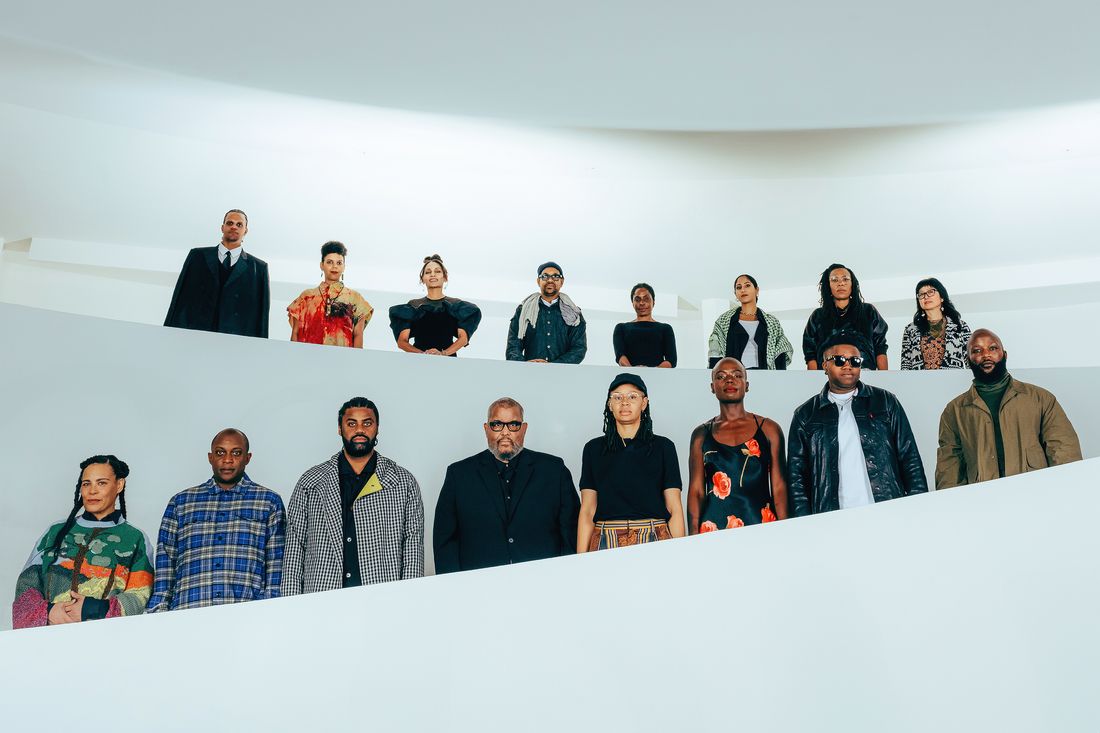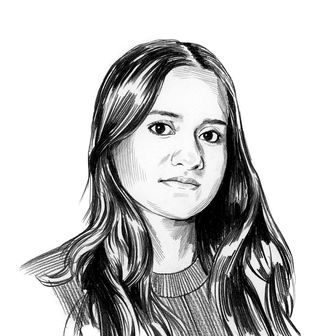
When Ashley James joined the Guggenheim as a curator in 2019, she began thinking about the concept of being seen, a veritable mantra in the Trump years for people from marginalized communities. She thought specifically of Lorna Simpson’s 2018 exhibition “Darkening,” in which the people in her paintings were clouded by deep, saturated blues. “Freedom is such a lofty goal,” James tells me, “but there is a certain lowercase-p power to be found in that evasion.”
Her new show, “Going Dark,” is composed of 28 artists, most of them Black, from across generations, including the established names Faith Ringgold, Kerry James Marshall, and Simpson and younger talents Sandra Mujinga and Sondra Perry. On the evening before the show opened on October 20, the artists and a select group of guests filed into the rotunda in shimmering cocktailwear for a private viewing.
“I’m really aware of how our conventions of good portraiture usually deal with somebody giving something of themselves up to the world,” says Brooklyn-based artist Farah Al Qasimi. Her photo series “It’s Not Easy Being Seen” features a woman in a headscarf whose skin is a green screen; she “wants to bleach herself white to disappear.” In Redecode, Dominican-raised artist Joiri Minaya takes the tropical prints of hotel-room wallpapers and pixelates them until they’re blurred, challenging the viewer to consider the history of violence on the islands they romanticize. “I think of this space of camouflage and opacity,” she says. “I think of it as a space of respite.”
The guests went up the rotunda, where invisibility functions as protection and violence: Rebecca Belmore’s mannequin wears a FUCKIN’ ARTIST, FUCKIN’ INDIAN hoodie, her identity shielded by long hair. It’s also a form of joy: In her Spectral Keepers installation, Norwegian artist Mujinga fashions nine-foot-tall tulle-and-cotton figures that draw inspiration from medieval beekeepers; they resemble bodies but have none. Then we’re ushered downstairs for a meal, celebrating the artists with — what else? — blackout cake. One of them photographs his slice and shakes his head at the pitch-dark image. “I can’t even see it,” he says.


